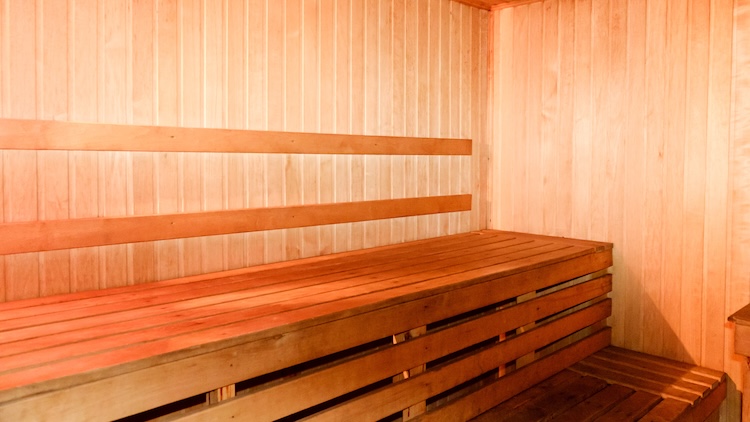
Saunas have long been celebrated for their health benefits, from relaxation and detoxification to cardiovascular support. But not all saunas are created equal. Infrared saunas and traditional saunas differ in how they generate heat, the temperature they reach, and how they affect your body. Understanding these differences can help you choose the right sauna to meet your health and wellness goals.
Understanding the Basics: Infrared vs. Traditional Saunas
What Is an Infrared Sauna?
Infrared saunas use infrared light to penetrate the skin and heat your body directly, rather than warming the air around you. This allows for a deeper, more gentle heat that can be easier to tolerate for longer sessions.
What Is a Traditional Sauna?
Traditional saunas, also known as Finnish saunas, heat the air using stoves or heated rocks, raising the ambient temperature to 150–200°F. This type of sauna creates intense, dry heat that induces sweating and cardiovascular stimulation.
How Each Type Produces Heat
-
Infrared saunas: Light waves penetrate the body, creating a warming effect from the inside out.
-
Traditional saunas: Hot air warms the body externally, often creating a steamy environment if water is added to rocks.
Key Health Benefits of Infrared and Traditional Saunas
Detoxification Benefits
Both sauna types promote sweating, which helps your body release toxins. Infrared saunas can create a deeper sweat at lower temperatures, potentially improving the efficiency of detoxification.
Cardiovascular and Circulation Effects
Infrared saunas increase heart rate and circulation, mimicking moderate exercise. Traditional saunas also improve circulation and can strengthen cardiovascular endurance through exposure to high heat.
Muscle Recovery and Pain Relief
Infrared heat penetrates deep into muscles, aiding recovery and reducing soreness. Traditional saunas also help with joint stiffness and relaxation but may not penetrate as deeply.
Stress Reduction and Mental Wellness
Both sauna types promote relaxation and reduce cortisol levels. The choice often comes down to personal comfort—some find the gentler infrared heat more soothing, while others enjoy the intensity of traditional saunas.
Skin and Anti-Aging Benefits
Increased circulation and sweating improve skin tone and texture. Infrared saunas may offer more targeted benefits for skin rejuvenation due to deeper heat penetration.
Differences in Temperature and Comfort Levels
Operating Temperatures for Each Sauna Type
-
Infrared saunas: 110–140°F
-
Traditional saunas: 150–200°F
How Heat Tolerance Impacts User Experience
Infrared saunas are easier to tolerate for longer periods, making them ideal for beginners or those sensitive to high heat. Traditional saunas provide a more intense heat experience that some users find invigorating.
Session Length and Comfort Considerations
Infrared sauna sessions usually last 20–30 minutes, while traditional sauna sessions can range from 10–20 minutes depending on heat tolerance.
Weight Loss and Fitness Benefits
Calorie Burn and Metabolism Effects
Infrared saunas can increase heart rate and metabolic rate, helping to burn calories similar to light exercise. Traditional saunas also burn calories but primarily through intense sweating and heat exposure.
Using Saunas to Support Recovery After Exercise
Both sauna types can be effective for post-workout recovery, helping muscles relax, reducing soreness, and promoting circulation.
Safety Considerations for Infrared vs. Traditional Saunas
Who Should Avoid High-Heat Saunas
People with cardiovascular conditions, low blood pressure, or pregnancy should consult a healthcare provider before using any sauna. Infrared saunas, with their lower temperatures, may be safer for some sensitive users.
Best Practices for Safe Use
-
Stay hydrated before and after sessions.
-
Limit initial sessions to 15–20 minutes.
-
Listen to your body and cool down gradually.
Choosing the Right Sauna for Your Needs
Health Goals and Personal Preferences
If your primary goal is deep relaxation, detox, or gentle circulation, an infrared sauna may be ideal. For those who enjoy intense heat and traditional sauna rituals, a Finnish sauna may be preferable.
At-Home vs. Spa Options
Infrared saunas are increasingly available for home use due to lower temperature requirements and smaller units. Traditional saunas often require more space and professional installation, but they are a staple in gyms, spas, and wellness centers.
Combining Sauna Types for Maximum Benefits
Some enthusiasts use both infrared and traditional saunas in rotation, taking advantage of each type’s unique benefits for circulation, detox, and relaxation.
Final Thoughts: Making the Best Choice for Your Wellness
Both infrared and traditional saunas offer incredible health benefits, from improved circulation and cardiovascular support to muscle recovery and stress relief. Choosing the right sauna ultimately depends on your personal health goals, heat tolerance, and lifestyle. Learn more about the benefits of infrared saunas here.
If you’re in Southern Pines, NC, and want to experience the full benefits of infrared sauna therapy, Plunge in the Pines is the perfect destination. With state-of-the-art infrared saunas, cold plunges, and contrast therapy, you can safely boost circulation, support heart health, and relax your mind and body.
